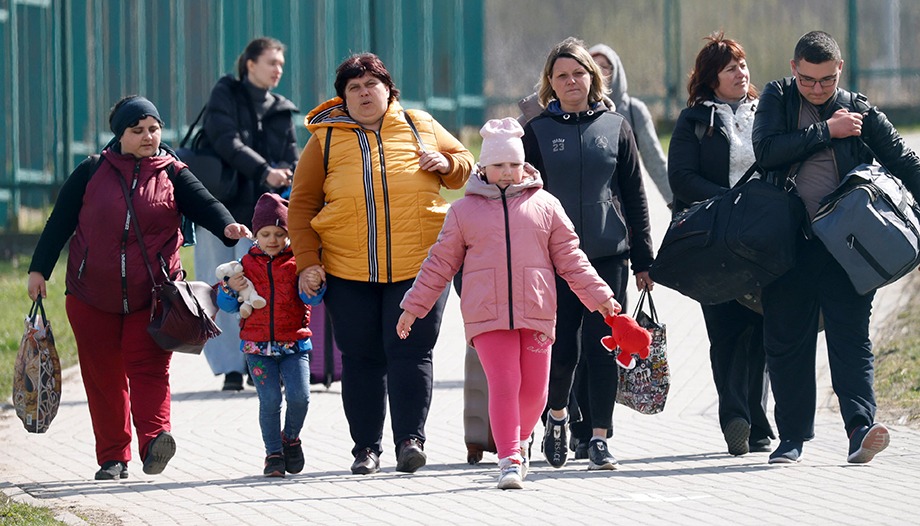"Bridges" that allow many children, women, men and elderly people to make a "journey in safety, legality and dignity", overcoming situations of precariousness and danger and trying to regain a little hope once settled in the host countries.
This is the fruitful experience of the so-called ".humanitarian corridors", launched for the first time in 2016 by the Community of Sant'Egidio, as summarized by the. Pope Francis’ in the meeting he held with hundreds of refugees and families involved through this reception network.
It is a project that was born thanks to the "generous creativity" of the Community of Sant'Egidio The Federation of Evangelical Churches and the Waldensian Table, as well as the contribution of the Italian Church through Caritas, are also participating in this project. A small example, at the same time, of ecumenism of charity.
A viable way to avoid tragedies
According to Pope Francis, the humanitarian corridors "are a viable way to avoid tragedies - such as the most recent one that occurred on the Italian coast of Calabria, in Cutro, with more than 80 victims - and the dangers linked to the trafficking of human beings". Evidently, this is a model that must be further extended and that must open "legal avenues for migration".
The Pontiff also launched an appeal to politicians to act in the interest of their own countries, because "safe, orderly, regular and sustainable migration" benefits everyone.
Not surprisingly, through the experience of the "Runners", integration follows reception, although the process is not always easy: "not everyone who arrives is prepared for the long road ahead".
But the Pope's encouragement to operators is very clear: "you are not intermediaries, but mediators, and you show that, if you work seriously to lay the foundations, it is possible to welcome and integrate effectively".
Moreover, the welcome also represents "a concrete commitment to peace", as well as becoming "a strong experience of unity among Christians", since it involves other brothers and sisters who share the same faith in Christ.
The first receptions
The experience of the "humanitarian corridors" was officially born on December 15, 2015, when the Community of Sant'Egidio, with the Italian Protestant Churches and the Ministries of the Interior and Foreign Affairs, signed an agreement-protocol: 1,000 visas for as many Syrian refugees coming from the camps in Lebanon.
The protocol had been made possible thanks to legal work that had found a possibility in Article 25 of European Regulation 810/2009, which provides for EU states to issue humanitarian visas limited to a single country. And so it was for the first time for Italy.
It came from the tragic experience of two massive shipwrecks in the Mediterranean Sea, the first on October 3, 2013 a few miles off the island of Lampedusa, with the drowning of 386 people, mostly Eritreans; in 2015, on April 18, 900 people embarked on an Egyptian fishing boat died in the Sicilian Channel.
According to data provided to the Community of Sant'Egidio itself, from 1990 to today - in thirty years, practically - it is estimated that more than 60,000 people have died or disappeared in the Mediterranean in their attempt to reach Europe. Figures that have often led Pope Francis to define this crossroads of exchanges and people, once "mare nostrum", at risk of becoming "a desolate mare mortuum".
On the shoulders of civil society
Since February 2016, humanitarian corridors have enabled 6,018 people from Syria, Eritrea, Afghanistan, Somalia, Sudan, South Sudan, Iraq, Yemen, Congo and Cameroon to arrive safely in Europe.
Of these, 87% were hosted in Italy, the rest in France, Belgium and Andorra. Thanks to a relocation program, Germany and Switzerland took in 9 and 3 persons from Greece, respectively.
These figures may not seem excessively large, but the explanation lies in the fact that it is "civil society" that finances the system without the intervention of state entities or institutions.
Once they arrive in the host countries, in fact, the refugees are welcomed by the project promoters and accommodated in various houses and facilities spread throughout the country according to the so-called "generalized reception" model.
The operators then accompany these people to integrate them into the social and cultural fabric of the country, through language learning, schooling for minors and other inclusion initiatives.
As we can see, this model is highly replicable through a virtuous synergy between public institutions and citizen associations.








